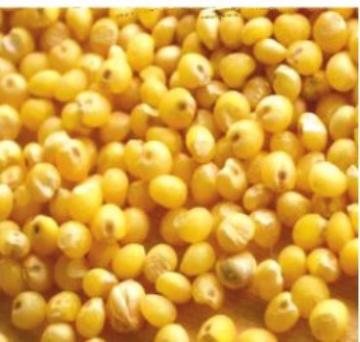
Millet
The name millet is frequently applied to several species of cereals which produce small grains and are widely cultivated in tropics. The most important members of this group include Pennisetum typhoides (Indian pearl millet or Bajra), Pennisetum americanum (pearl millet), Panicum miliaceum (broomcorn millet), Setaria italic (Italian millet), Eleusine coracana (finger millet), Pspalum scorbiculatum (ditch millet) and Echinochloa crusgalli (Japanese millet). Millet has traditionally been viewed as a poor persons’ crop, lacking prestige and appeal but it holds great potential as a food crop adapted to marginal, drought stricken areas. Millet grain is typically is produced in spike like panicle with small round seeds less than half the diameter of sorghum seeds.
Nutritive value
The composition of millet is very variable, the crude protein content being generally within the range 10-12%, the ether extract 2-5% and crude fibre 2-9%. Millet has a nutritive value very similar to that of oats and contains a high proportion of indigestible fibre owing to the presence of hulls which are not removed by ordinary harvesting methods. TDN content varies from 75-85%. Millet is a small seed and is usually ground for feeding to cattle.
